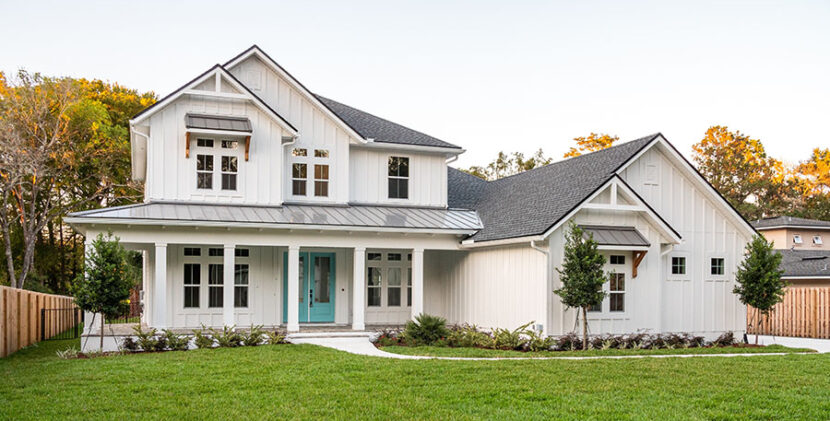Learning Center » Home Improvement
How to Keep Your Home Cooler This Summer

US summers become hotter every year. Temperatures have risen by 5° F in the last year century, and rising electricity costs don’t make sweltering days any easier. They’ve been climbing by 10.7% year upon year, so a glistening new air conditioner isn’t always an adequate solution. Modern homes need to do more than just cool themselves artificially. They must also have exceptional thermal resistance. You can boost your comfort in five core ways:
By maximizing your R-value
The R-value of your home determines how well it resists outdoor temperatures. The better you can resist heat flow, the cooler you’ll feel in the summer. Energy Star has created a list of recommended R-values for every insulating feature in your home. Your attic, for example, should achieve an R value of 49 to 60.
Your floors and crawlspaces need between R-25 and R30. The hotter your summers, the higher your values must be. If your property isn’t achieving its recommended thermal resistance levels, you’ll need to bolster it with blow insulation, insulating siding, and sheathing. Insulated vinyl is often celebrated for its reflective properties and insulating power. It can reduce your cooling costs by up to 20%. Fiber cement can achieve savings of up to 15%. While it can’t compete with vinyl, it can last 50 years or more.
Get a Free Estimate Today
50% off installation. Special financing available. See details.
By installing triple-pane glass
Double pane glass yields a maximum of 90% energy efficiency and an R-value of 3.7%. Those numbers can be useful, but they’re far from sufficient, so triple paned glass has entered the market. It yields up to 97% efficiency and an R-value of up to 8. This allows windows to block heat flow almost entirely.
This effect is achieved through more than just an ultra-thick pane. The sealed space between each piece of glass helps with heat retention. The first and second panes are usually built from low emissivity glass. The third is generally made of materials with low iron content, helping to reflect warmth and reduce thermal loss. Spacer bars are another important feature that keeps heat from passing through the frame.
The gaps are insulated further through the inclusion of argon gas. Triple-glazed windows are harder to break and have a longer lifespan of up to 25 years. This investment will keep you cool for a quarter of your adult life, so it’s well worth making.
By sealing gaps
It’s pointless to seal your windows if all that thermal energy you’ve resisted can enter through a seal gap around your doors. It might be time for an upgrade. Aluminum doors have a reputation for providing exceptional insulation, but composites can be built from any combination of insulating materials. A door crafted from a combination of foam, timber, GRP, and uPVC can provide as much thermal mass as iron.
It’s no surprise, then, that cold room doors are usually built from composites, stainless steel, and aluminum. You can add the same technology to your entryway doors. This will retain the temperature your air conditioner works so hard to achieve, reducing energy costs simultaneously. Alternatively, wrought iron can manage heat transfer with the help of thermal barriers or insulation. If you add a reflective coating, your summer will become considerably comfier.
By adding a ceiling fan
Central air conditioners cost about 36 cents an hour. If you can raise your thermostat setting by just 4 degrees, you’ll chop almost 20 cents off your hourly bill. A ceiling fan creates a breeze that makes your home feel 4 to 7 degrees cooler, allowing you to set your air conditioner to a lower setting. It will also circulate cool air through your home more effectively while moving warm air upwards, away from ground level.
By using windows to moderate air flow
Open windows offer more cooling potential than you might think. Circulating air from opposite sides of your home can release heat and draw cool air inside. Double hung and casement windows are premium cooling choices for their circulating powers. They have tight seals and can direct cool air into your home effectively. Skylights are equally efficient at moving the day’s warmth outside and allowing fresh air to take its place.
Even so, windows aren’t an all-season solution. They’ll only contribute to your comfort when the air outside is cooler than the air inside. When temperatures soar, it’s best to close your windows and allow your air conditioner to do its best work unimpeded.
Every component of your home’s outer shell contributes to, or detracts from, its thermal resistance. Tiny gaps can have a devastating impact on your R-value, and so can materials that lack insulating powers. Even if you block every millimeter of sunlight, warmth will enter through delicate seals and slim facades. Fortunately, today’s fabrications and designs are innovative enough to fight the heat.
Need help with a windows, roofing or siding home improvement project? Click here for a free estimate.
















